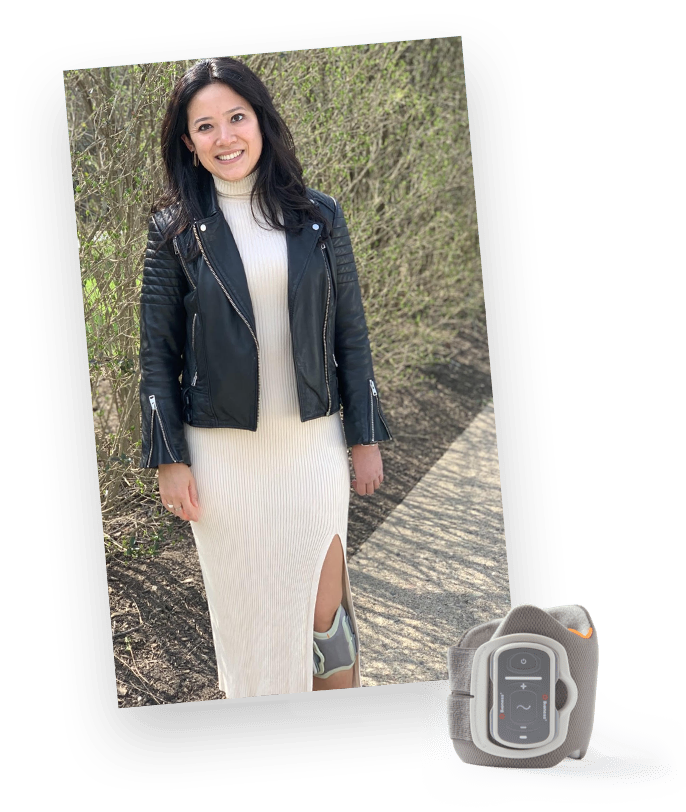Success Stories

Turning Obstacles into Opportunities
Meet Stroke Survivor, Maddi
Her Story
Post-Grad Change of Plans
Maddi’s journey of hard work and perseverance began a week after her college graduation from Georgetown University, when she suffered from a stroke at the age of 22. Maddi was determined to not let her stroke stop her from living the best life she possibly could, and is committed
to her recovery, showing incredible strength and improvement everyday.
Her Solution
Rehabilitation and Re-learning
Maddi was looking forward to her exciting future; as a recent 2017 college graduate, she was planning on moving to Boston following a job offer. However, not long after, things changed very quickly for Maddi.
Maddi had been experiencing severe migraines since she was a child – so bad, that when she was 14, she had one last 24 days. What started out as migraines led to Maddi being diagnosed with an arteriovenous malformation in her brain; doctors told her she could potentially live a normal life, but there was a risk of it rupturing. In order to eliminate the risk, Maddi decided to undergo a routine preoperative procedure to
remove it. However, she suffered from a stroke after a blood clot in her brain ruptured during the procedure. Spending 15 days in the intensive
care unit at New York Presbyterian Hospital and five weeks in inpatient care, Maddi was only in the beginning phases of her recovery.
After she woke up, Maddi was completely paralyzed on the left side of her body, and was unable to talk or swallow. Starting from square one,
Maddi was tasked with re-learning how to be independent, including how to walk, talk, and eat again.
Maddi was in physical and occupational therapy for a year and a half, and tried traditional, low technology options like an ACE bandage and
an ankle foot orthosis (AFO), but was still yearning for more options to assist her recovery. While in outpatient therapy, Maddi was introduced
to the Bioness L300 Go, a device that uses functional electrical stimulation to activate the nerves and muscles in the leg, and she
began to see results with the device, which allowed her to regain mobility. Having been diagnosed with a chronic health condition like
migraines, Maddi was well aware of clinical challenges, and was a very self-motivated person. Although it took a bit of getting used to, she was
able to get more accustomed to her Bioness little by little, setting goals almost immediately.
Her Next Steps
Maddi Moving Forward
When Maddi was introduced to the Bioness L300 Go in therapy, she had set the goal for herself to use the device to walk in heels, without
the help of her family, as the Maid of Honor at a friend’s wedding. Practicing in high heels with the Bioness for 10-15 minutes everyday,
Maddi successfully achieved this goal at her friend’s wedding in October of 2019, just over two years after her stroke. Today, Maddi finds herself wearing the device everyday, and is constantly looking for ways to challenge herself. Whether it is getting down the stairs without a railing for the first time, or travelling alone internationally and swimming in the ocean for the first time since her stroke, Maddi believes that “obstacles are opportunities”.
Embracing her hardships and pursuing her passions, Maddi currently works as a reinsurance underwriter and has successfully authored two
books. Maddi’s next goal includes being able to live alone, and working to transform her struggles into a positive experience to inspire others.
While the Bioness L300 Go may be the new ‘normal’ for Maddi, she is dedicated to achieving her goals and won’t let anything stop her.

See more Success Stories
See how the L300 Go has changed other patients’ lives. Check out their success stories.
Contact us to schedule a demo with L300 Go or if you have questions about other Bioness Medical, Inc. products.
Indication for Use: The L300 Go System is intended to provide ankle dorsiflexion in adult and pediatric individuals with foot drop and/or to assist knee flexion or extension in adult individuals with muscle weakness related to upper motor neuron disease/injury (e.g., stroke, damage to pathways to the spinal cord). The L300 Go System electrically stimulates muscles in the affected leg to provide ankle dorsiflexion of the foot and/or knee flexion or extension; thus, it also may improve the individual’s gait.
The L300 Go System may also facilitate muscle re-education, prevent/retard disuse atrophy, maintain or increase joint range of motion, and increase local blood flow.
L300 Go is is contraindicated in patients with a demand-type cardiac pacemaker, defibrillator or any electrical implant. Do not use the system on a leg where metallic implant is directly underneath the electrodes, a cancerous lesion is present or suspected, or on a leg with regional disorder (e.g., fracture or dislocation) which could be adversely affected by motion from the stimulation. Use caution in patients with diagnosed or suspected cardiac problems or epilepsy. Full prescribing information can be found in product labeling or at: www.bionessmedical.com/l300/safety-information.
